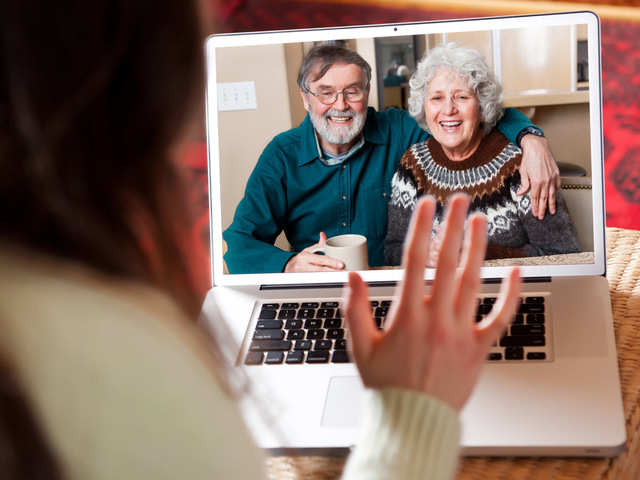Video Call Software
Video chatting has been around for a while but only recently has it been extremely normalized and essential to work environments.
The first video call happened in 1964 by AT&T with a program called Picturephone. This era of developing video chat in the diffusion of innovations terms would be considered the Innovators section of the graph. This beginning portion of video calls lasted until around the 1990s.
The 1990s era of video calls could be considered the early adopters section of the diffusion graph, with the introduction of CU SeeMe for Apple's Macintosh users. But Video chat really took off in 2003 when skype was invented and this introduces the 2000s as the early majority of people using this type of technology.
The late majority section of the diffuse map can be sectioned from 2015-2020. From 2015-2019 people all around the world were using video calls to stay in touch, play video games together, or handing a long-distance relationship. But for the year 2020, all students, teachers, business people, and many more have all adapted video chat due to the global pandemic. All people who now have to use video calls for work have gone from video calls being fun to do in your free time, to a necessity to continue working. Most people know how to use some sort of video call software now.
The near future will be considered the laggards that still haven't used video calls.
The negative side effects of this technology make people fatigued for being on an important meeting call. Meetings are already boring enough, but being on camera, knowing audio etiquette, and barely being able to hear someone due to internet issues can be exhausting on a worker when the meeting can just be a simple 5 sentence email.
Dean Smith's Social Media Dilemma
I think not having social media has its pros and cons. The pros of social media are being able to communicate with family and friends and the opportunity to meet people you normally wouldn't otherwise. The cons of social media are becoming addicted to constant stimulation. Many young adults and teens scroll through social media for hours just so that the mind is distracted and doing something.
I also think that it's easy for someone like Dean Smith who has a stable job and stable life to not have social media. There's a certain point in your life where you don't need to care about keeping up with the family(my dad does the same). Personally for me, in order to get a job in the video game industry, I have to be wildly present on social media. I have to have a LinkedIn so that potential employers can see what I look like and what job's I've had in life. I also have a website where I display all my games and art so that potential employers know how well I'm going to perform if they hire me. If I didn't have either of these pieces of tech, I would never be hired.
Video Call History: https://www.eztalks.com/video-conference/history-of-video-conferencing.html



No comments:
Post a Comment